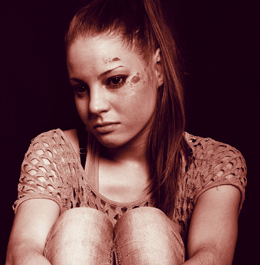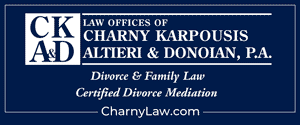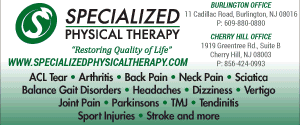
Human trafficking is a major issue in American cities, but South Jersey? Well, it’s more prevalent than you think; which is why authorities are showing a renewed focus and cracking down like never before.
You’ve probably seen the billboards. They popped up just before the Super Bowl, declaring that human trafficking was reported in all 50 states last year, with more than 14,000 cases in the last six years alone. Similar signs dot the Route 30 highway at the gateway to Atlantic City, but most probably assume that as they exit the gambling mecca, they’re leaving the threat behind.
Not so, stress local law enforcement and advocates. Though this tri-county region of South Jersey may be tucked away in suburbia, the key ingredients are not far: Major highways and a close proximity to cities with a high concentration of homeless, strip clubs and crime make it a breeding ground for potential.
And as Joni Whelan explains, gangs and drug dealers are increasingly turning to human trafficking. “If you are selling drugs, you have to put out money to replenish your supply,” she says. “But [people] can be sold several times a day, every day.”
The thoughts that tend to come to mind involve bondage, immigrants and third-world issues. But Whelan, a Williamstown native and founding member of HEAAT (Helping to Educate and Advocate Against Trafficking), aims to change that stigma. She wants people to know the problem is all around, and those involved are victims who need our help.
“People picture the girl standing on the corner with high heels, but that’s not what we have here,” says Cherry Hill Police Chief William “Bud” Monaghan. “Everything we have is behind closed doors. I think people don’t think it’s happening because they can’t physically see it on a consistent basis. But just because you don’t see it doesn’t mean it’s not there.”
The evidence around us
New Jersey Department of Justice data shows that since September of 2005, there have been 193 cases of human trafficking reported, including 93 victims for labor, 74 for sex and 26 for both labor and sex trafficking.
Add to that a case Monaghan’s department handled this past March when a standard prostitution sting—an undercover detective responding to a backpage ad online—led to the discovery of a Trenton man holding several women against their will, under the threat of violence against them and their families, at the Inn at the Dove on Cuthbert Boulevard.
Brian A. Moore, 44, was charged with promoting prostitution and human trafficking, with the latter charge making him among the first in the state arrested under a revised, stricter form of the law passed last summer.
Formerly, a pimp would only be charged if, among other things, evidence showed physical restraint or concealing a victim’s personal identification. Now, fraud, deceit and misrepresentation are grounds for charges, as well as making drugs available as a form of coercion.
That would have allowed a 2009 case in Cherry Hill to lead to a human trafficking charge, but even though the charge itself has been on the books in New Jersey since 2005, it couldn’t have been made without the 2013 revision.
A Willingboro man was charged only with promoting prostitution after holding a woman at Extended Stay America on Route 70 for three weeks, feeding her 30-bag-a-day heroin habit by forcing her to have sex with as many as 12 men a day, Monaghan says.
With cooperation from hotels, the Cherry Hill police force makes prostitution busts on a fairly regular basis—“It’s pretty much at every hotel in town,” Monaghan says—but searching for that line between a willing participant and a victim is difficult.
Officers go through routine training and go into initial interviews at the scene looking for certain signs, trying to ease their apprehension and make them aware that help is available, but the chief says fear is a powerful strong arm held by pimps.
And the stigma from the public doesn’t help.
That’s why the Human Trafficking Prevention, Protection and Treatment Act of 2013 also includes resources for victims like the creation of a Commission on Human Trafficking, a Human Trafficking Survivor’s Assistance Fund, and the opportunity to apply to have convictions expunged.
Unimaginable crimes
Whelan, a licensed clinical alcohol and substance abuse counselor and certified social worker, began to focus on the issue of commercial sex trafficking in the mid-’80s when she was faced with a horrific, eye-opening case right in Camden County—“not Camden City,” she adds.
She had a 13-year-old who was a consistent runaway sent to her because the mother was an addict in jail. She was raised by her grandmother, and the grandmother’s boyfriend often took the child off her hands, eventually for a whole day or weekend. “It turns out, where he took her was to shooting galleries and crack houses, selling her for drugs,” Whelan says.
She died at 16 from AIDS.
It wasn’t until Whelan met Tina Minnis and Lisa Stevens, working for DYFS at the time, that they helped her make the connection that it was a case of human trafficking. Soon after, they founded HEAAT—an Atlantic County-based nonprofit that works to educate and advocate on behalf of victims, getting the word out to law enforcement and, equally as important, schools.
Youth are extremely vulnerable; the National Runaway Safeline estimates between 1.3 and 2.8 million runaway and homeless youth in the U.S. are living on the streets each year, and one in three are lured by traffickers and pimps within 48 hours of leaving home.
HEAAT aims to teach kids how to avoid it and what to look for, and stress the fact that it isn’t always a “pimp,” as in the case Whelan witnessed in the ’80s. Just recently, she worked with a woman in her early 20s who was trafficked by her mother since the age of 5 in Gloucester County.
“One of the things we’re trying to do is change laws,” Whelan says. “We want people to know this is not a third-world issue. This is an American issue. This is a New Jersey issue. This is a South Jersey issue.”
The vulnerability of youth
A quick search on BackPage.com, a site commonly used by prostitution rings to set up appointments, yields dozens of listings in Burlington, Camden and Gloucester counties for the current day alone.
Though anyone still hesitant to think it could happen near them need not look further than the story of Holly Austin Smith, who at the age of 14 was lured from her rural home in Little Egg Harbor Township.
Describing herself as a typical teenager, she says she was vulnerable enough to fall for the attention given to her by a man she met at the Hamilton Mall who she thought was in his early 20s.
“I think I was struggling a little more than my friends were with the transition from middle school to high school and all the angst issues that come up in that time,” she recalls. “I was really depressed and I didn’t get along with my parents. My self-esteem was at its lowest.”
Straggling behind her friends that day, she couldn’t help but feel complimented when the man made eye contact with her and motioned her over. It was usually her friends who were singled out in the crowd, she says; never her.
She exchanged phone numbers with him—not finding out till later he was in his 30s—and they spoke for two weeks, him telling her she was too mature for her age; she was pretty enough to be a model; he could get her a fake ID and into famous nightclubs to rub elbows with celebrities.
On July 1, 1992, she fled. He brought her to a different mall that night, picking out clothes and high heels for her that she thought were for a club. But then they went to an Atlantic City motel, where a woman dyed her hair and dressed her up. “When he came back to the motel room and started going over things with me, that I had to earn $200 an hour, I had a new name, birthdate, I realized he was talking about prostitution.”
Fortunately, the whirlwind nightmare ended when she was arrested two days later on Pacific Avenue. But she was treated by police as a delinquent, a criminal. That combined with the immense guilt she felt for years—it was her decision to leave after all, so she always blamed herself—prevented her from realizing she was victimized.
It wasn’t until viewing a documentary five years ago that she understood it was human trafficking. Like Whelan talking to Minnis and Stevens, it’s when her eyes opened. “Even me, a victim of human trafficking, if someone said that term to me before 2009, I would have imagined foreigners being smuggled into the country.”
The now 36-year-old Virginia woman has since become a well-known advocate against human trafficking. She’s a highly sought-after public speaker, a leader for legislative change across the nation, and author of the recently released memoir, Walking Prey.
The Twitter account for the book includes news links from across the country involving human trafficking—adding up to nearly 30 cases during just the month of May, mostly involving minors.
A most recent case is a Glassboro man and Blackwood woman who were arrested last month for human trafficking after allegedly luring a 16-year-old girl into the trade.
“At 14, we think we’re young adults. I didn’t have a concept of manipulation. …That’s why I’m very passionate,” Smith says. “I want [people] to understand how a child can go from being a middle school student to being on the streets within hours. … There needs to be awareness programs and prevention in schools. This population is the prime target for traffickers and they have the right to know that.”
What more can be done?
In Gloucester Township, a MARRS (Missing At Risk Responsive Strategies) program was launched in April 2013 by the police department to, among other things, raise awareness of sexual exploitation. An important component is the hiring of a social worker—a unique addition to any department in South Jersey—to one, help determine the line between willingness and force, and two, help connect victims with the sources they need to recover, from substance abuse help to basic life skills assistance.
“A woman can be exploited and not even realize it,” explains Gloucester Township Police Chief Harry Earle, whose department uncovered a significant case in January in which a Sicklerville man and Pennsylvania woman were charged with human trafficking after forcefully recruiting a woman from North Carolina. Eight people in total were arrested at the Howard Johnson on the Black Horse Pike.
“With that one, we had a change in mindset of how we were approaching the women,” Earle says. “People think a victim has to be shackled and enslaved somewhere. I heard a term in training recently: survival sex. They’re having sex just to meet basic needs. They’re not even aware that they’re being exploited.”
There’s also a large focus through MARRS on youth runaways, and more follow-up is now standard for the police department. “Traditionally we took the child back to their house and left,” he explains. “[But] maybe we’re bringing them back to the place they should be running from. There’s a whole new philosophy to prevent future victims of human trafficking.”
As Monaghan says, law enforcement are taking a more “holistic view.” “You can keep arresting that person, but if you don’t address the underlying problem, you’re just basically treading water.” He says they have a program in place to begin soon that’ll involve community awareness campaigns with PTA and parent groups, church groups and more.
Gloucester Township has a GT VISION program—Violence in Society Initiative Operational Network—focusing on educating youth through a junior police academy, family resource center and more about risky behaviors to teach them what to look out for.
“Honestly I think there’s more improvement that needs to be done,” Earle says, adding a lot of it comes down to basic awareness. “There was a lot of awareness coming out of the Super Bowl and it was great. But people thought, ‘OK, the Super Bowl is over so we don’t have to worry about it,’ but that’s not the case. It’s just as active as any other time. It didn’t go away.”
Monaghan ventures to say you could check every town between Baltimore and New York and find it. They could be missing children from other areas of the country, and they aren’t sedentary. Here one day, gone the next.
“How is this happening to kids?” Whelan concludes, followed by a simple plea. “Wake up. It is definitely happening here in the suburbs.””
Published (and copyrighted) in South Jersey Magazine, Volume 11, Issue 4 July, 2014).
For more info on South Jersey Magazine, click here.
To subscribe to South Jersey Magazine, click here.
To advertise in South Jersey Magazine, click here.











